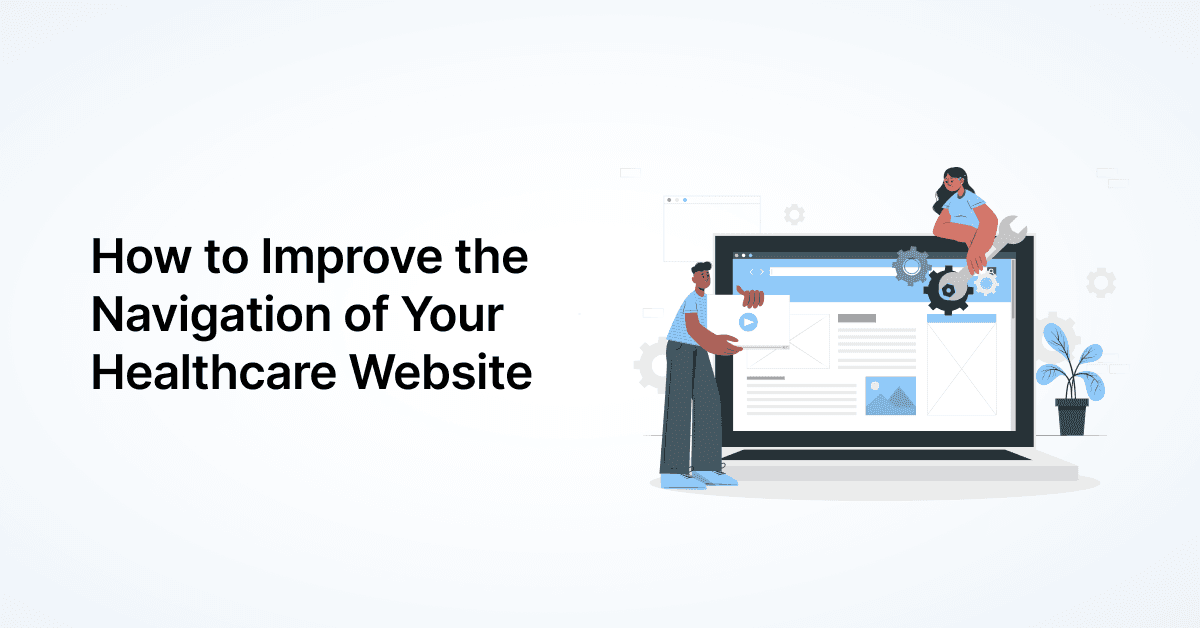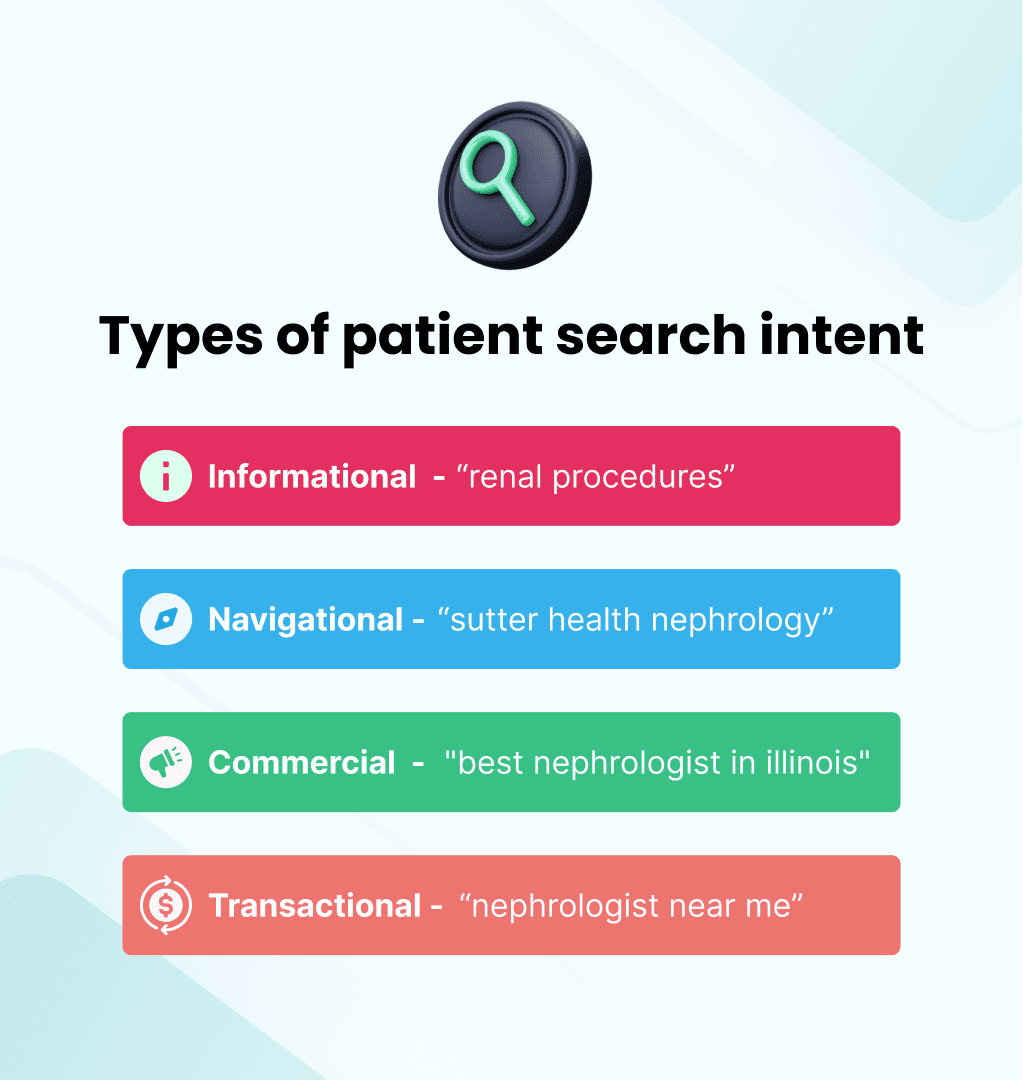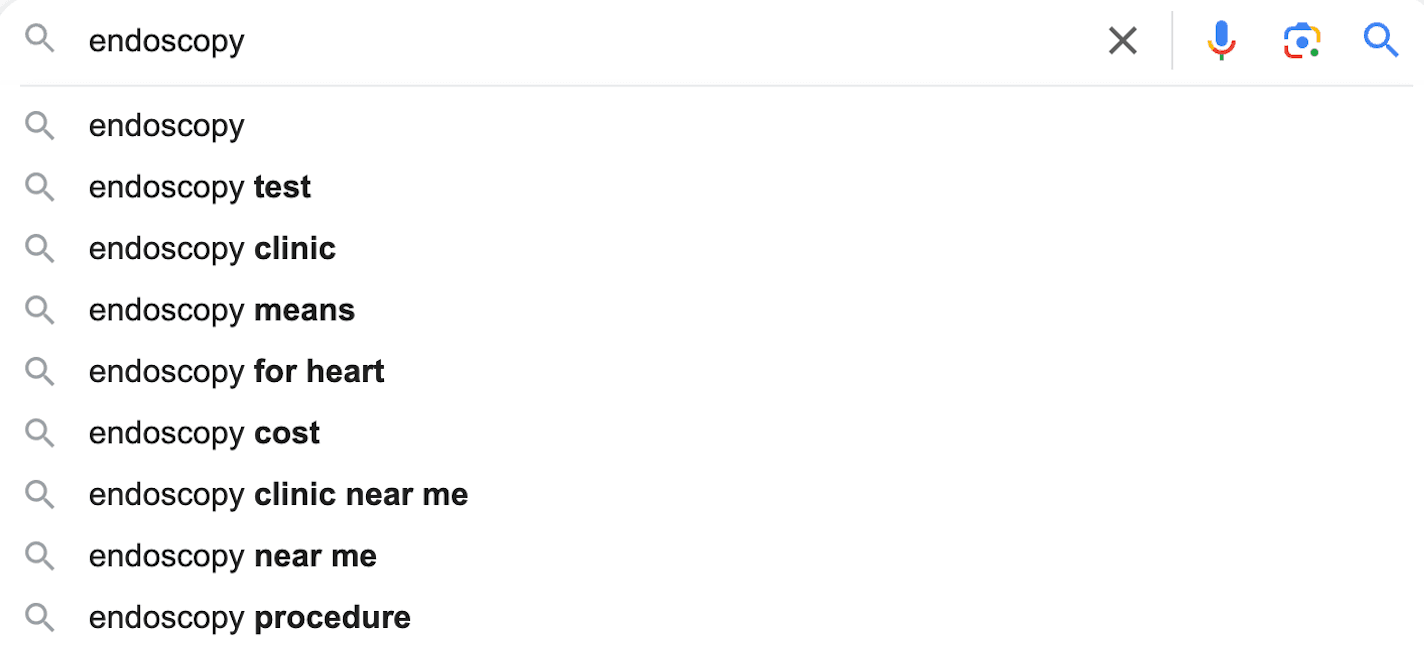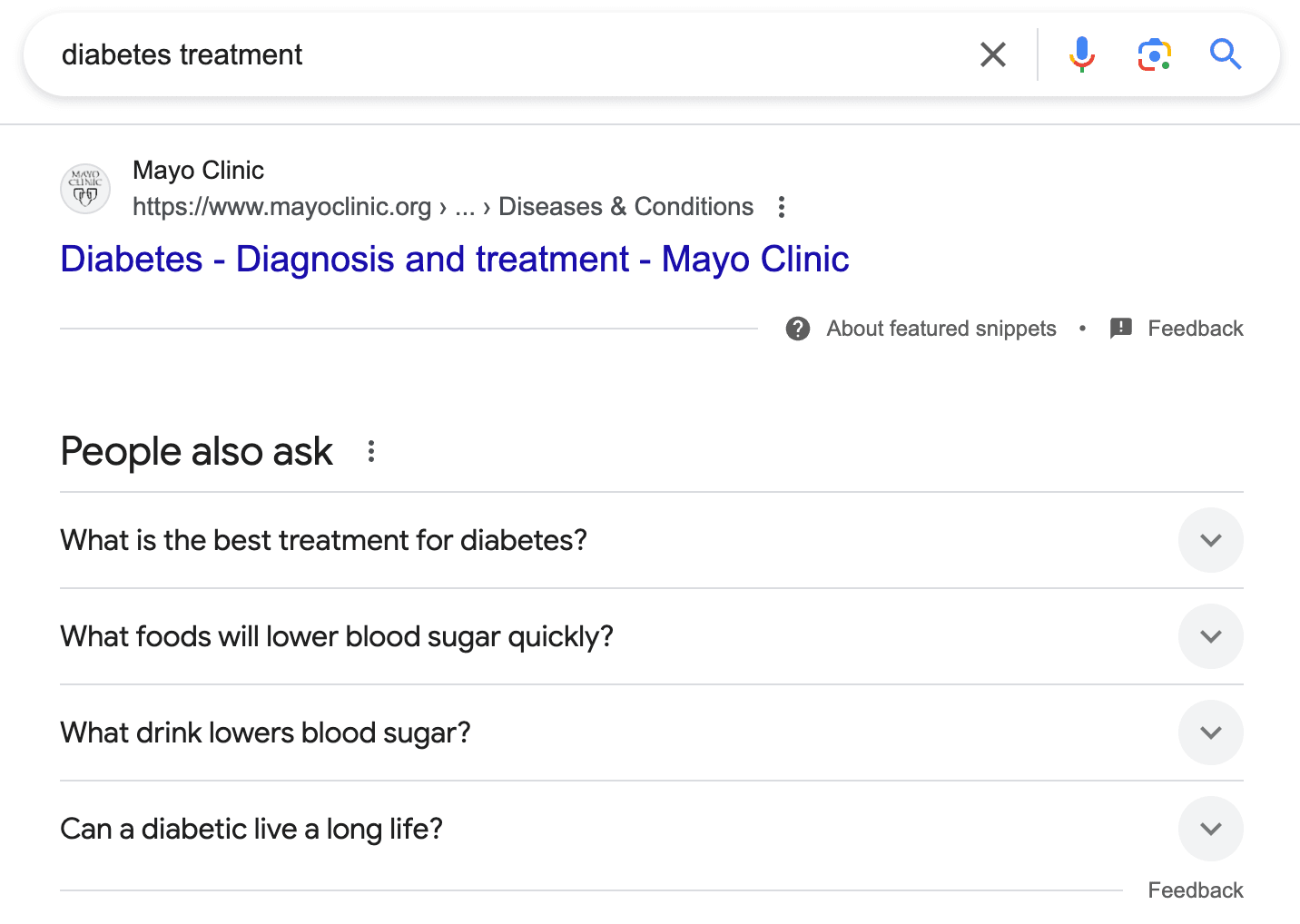
9 Best Practices for Healthcare Website Navigation
An eye-catching healthcare website design isn’t just about aesthetics and content - it’s about seamless …

The way patients interact with your practice often begins long before they ever set foot in your office. It starts online, with a simple search.
But patient search intent can significantly impact how you should be engaging with them online. That’s why you should know how to track search intent of your website visitors.
In this blog post, you’ll learn what patient search intent really means, how you can identify it, and why it matters so much for your practice’s success.
Put simply, search intent is the reason behind a person’s search query. When someone types something into Google, they have a specific goal in mind. Maybe they want to learn more about a topic, find a particular website, or buy a product. This underlying goal is called search intent.
For example, if someone searches for “best running shoes”, their intent might be to compare different brands and eventually make a purchase.
On the other hand, a search for “how to start running” likely has an informational intent, where the user is looking for advice or guidance.
Patient search intent is no different, but it specifically refers to the reasons behind a patient's online searches related to healthcare.
Imagine a potential patient typing into Google, “symptoms of diabetes” or “pediatrician near me”. Each of these queries comes with a different intent.
Let’s consider a few examples:
Understanding how to track search intent can help your practice connect with patients on a more meaningful level. It would lead to better engagement and, ultimately, more appointments.
Identifying and mapping patient search intent offers several benefits that can give your practice a significant edge in SEO:
By understanding what your patients are searching for, you can create content that directly addresses their concerns or needs. This not only makes your website more relevant to visitors, but also positions your practice as an authoritative source of information.
When your content aligns with patient intent, they are more likely to take the next step - whether that’s booking an appointment, signing up for a newsletter, or contacting your office for more information. The more aligned your content is with what patients are searching for, the higher your conversion rates will be.
Search engines like Google prioritize websites that best answer users' queries. By focusing on patient search intent, your website is more likely to rank higher in search results. This, in turn, will drive more organic traffic to your site.
When you know how to track search intent effectively, your content will resonate with potential patients because it meets their specific needs. At that point of time, they’re more likely to engage with your practice, whether through social media, email, or directly on your website.
As I’ve mentioned before, not all patients are searching for the same reasons. Understanding the different types of search intent can help you tailor your content to better serve your patients.
Here are the 4 main types of patient search intent:

This is when a patient is looking for information. They might be researching symptoms, treatment options, or general health advice.
For instance, a search for “early signs of diabetes” or “renal procedures” indicates that the patient is in the research phase, seeking to learn more about a potential condition. So they aren’t ready to schedule an appointment just yet.
Knowing how to track search intent at this stage can guide you in creating informational content like blog posts or FAQs. These can be extremely effective in capturing this type of intent.
Here, the patient knows exactly where they want to go. They might search for your practice by name, or look up a specific department or service within a hospital.
For example, a query like “sutter health nephrology” shows that the patient is specifically trying to find information or resources about kidney care from that particular hospital.
In this case, the patient is comparing their options before making a decision. They might search for “best nephrologists in illinois” or “top-rated cardiologists in texas”. These patients are in the decision-making process and are evaluating their options before scheduling an appointment.
This type of intent is the goldmine. It indicates that the patient is ready to take action. They might be looking to schedule an appointment, order medication, or sign up for a health service.
A search like “nephrologist near me” or “dentist appointment near me” is a clear sign that the patient is ready to engage directly with a dentist.
So, how do you figure out what your patients are searching for?
Here are some free tools and tips to learn how to track search intent:
Google Search Console is an invaluable tool for understanding how patients find your website. It provides insights into the keywords that bring users to your site, showing you exactly what they’re searching for. This data can help you refine your content strategy to better match patient intent.
For instance, if you notice that many patients are finding your site through searches related to “treatment for chronic back pain”, you might consider creating more content around pain management or spinal health.
GSC also provides data on the performance of your website, including click-through rates, impressions, and search positions, all of which are critical for understanding patient behavior.
If you haven’t already, here’s how to set up Google Search Console for your website.
Google Autocomplete is a feature that suggests search queries as users begin typing. These suggestions are based on popular searches and can offer valuable insights into what patients are searching for.
For example, typing “endoscopy” into Google might bring up suggestions like “endoscopy cost”, “endoscopy procedure”, or “endoscopy near me”. Each of these suggests a different type of search intent.

Understanding these variations can help you tailor your content to address the specific needs of your patients.
Long-tail keywords are more specific, multi-word search phrases that patients use to search on Google, when they have a particular need or concern. These keywords typically have lower search volumes but higher intent, meaning the patients who use them are more likely to convert.
For example, instead of searching for “heart attack”, a patient might search for “early signs of heart attack in women”. This long-tail keyword suggests that the patient has a specific concern and is likely looking for detailed information.
Tools like SEMrush, Ahrefs, or even Google Keyword Planner can help you identify long-tail keywords relevant to your practice.
Midway through the search results on Google, you’ll often find a ‘People also ask’ section. This is a treasure trove of common questions related to the search term you’re focusing on.

By addressing these questions directly on your website, you can better meet the needs of your patients and improve your site’s relevance and authority.
For example, if you’re targeting the keyword “diabetes treatment”, the ‘People also ask’ section might include questions like “what is the best diet for diabetes” or “can diabetes be cured”.
Answering these questions in your content can help you capture more search traffic and provide valuable information to your patients.
Let’s say your practice offers services for managing pediatric asthma. A potential patient - or more likely, the parent of a patient - might search for "best treatments for childhood asthma". The intent here is likely informational, as they are looking for detailed information about treatment options.
If you understand how to track search intent, you can create a blog post that thoroughly covers this topic, including an overview of different treatments, their effectiveness, and any potential side effects. This would meet the patient's informational intent.
Moreover, by including a call-to-action (CTA) like "Book a consultation", you can guide them from the informational stage to the transactional stage.
This approach not only helps in addressing the patient's immediate concerns, but also builds trust and positions your practice as a leader in pediatric asthma care.
Understanding how to track search intent is like having a roadmap to your patients’ needs and expectations.
So, how do you get started?
Begin by using the tools and strategies we’ve discussed to identify the search intent of your potential patients. From there, tailor your content to meet their needs, answer their questions, and guide them through their healthcare journey.
And remember, you're not alone on this journey. Practifly’s SEO and content team is here to support you every step of the way. From crafting targeted content to optimizing your website for better search rankings, we can help you identify patient search intent and ensure your practice stands out in Google search results.
Ready to enhance your healthcare SEO strategy and attract more patients? Schedule a call with our healthcare marketing expert right away.
Join over 3,200 subscribers and keep up-to-date with the latest innovations & best practices in Healthcare IT.

An eye-catching healthcare website design isn’t just about aesthetics and content - it’s about seamless …

You must know by now that Google Analytics 4 (GA4) replaced Universal Analytics (UA) on July 1, 2023. It helps …

Google Analytics 4 (GA4) follows an event-based approach to tracking website activity, as opposed to the …